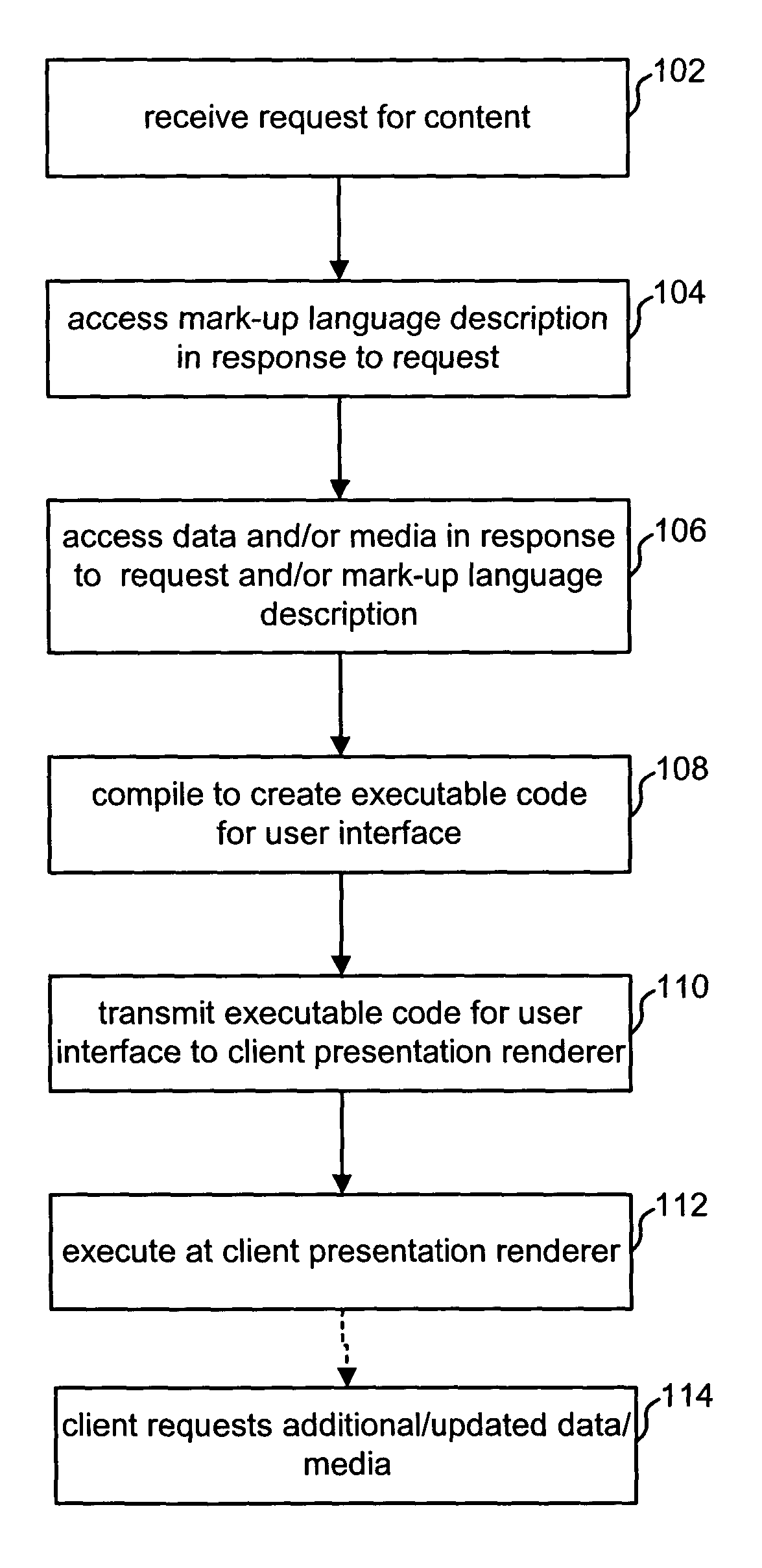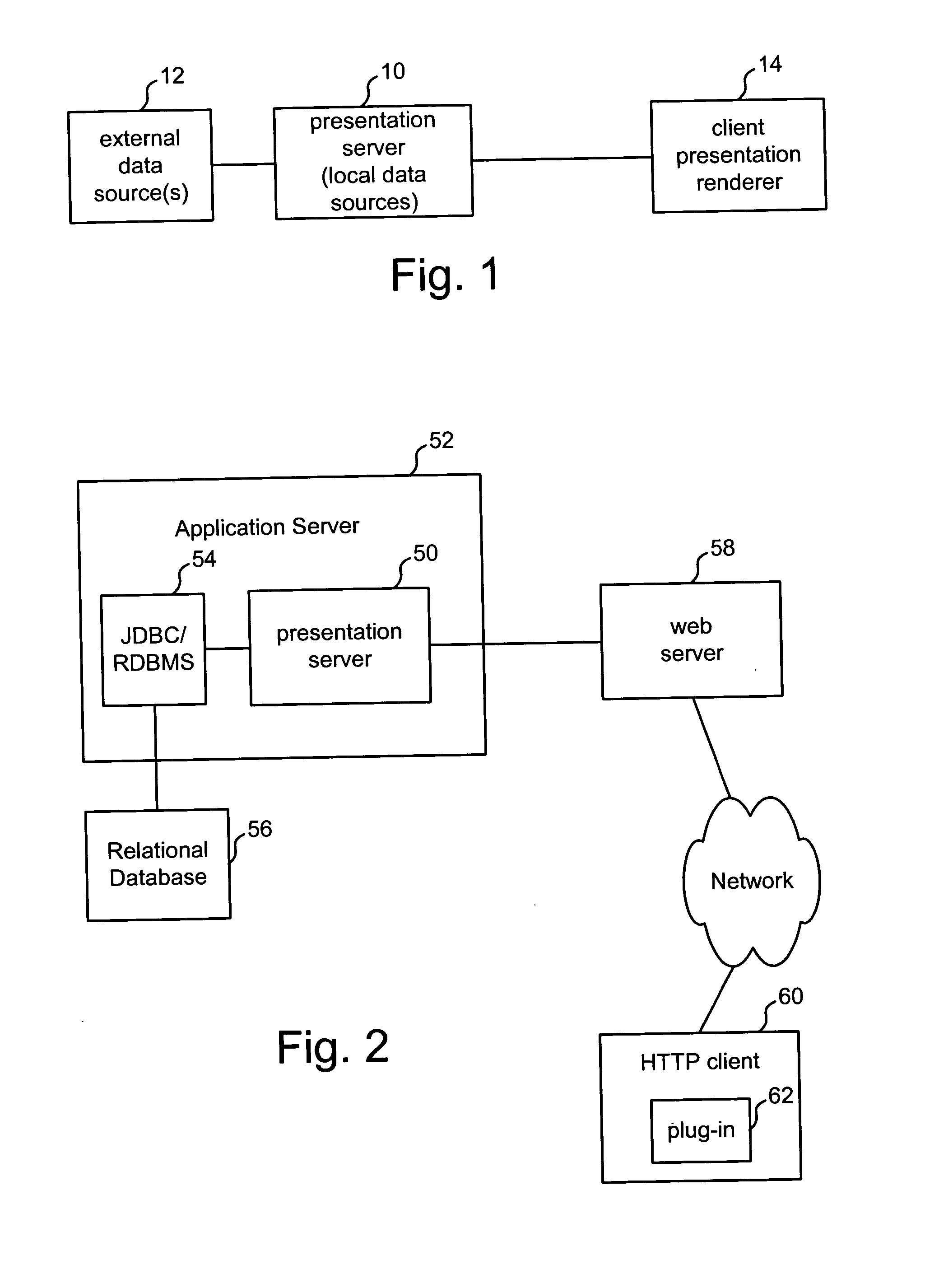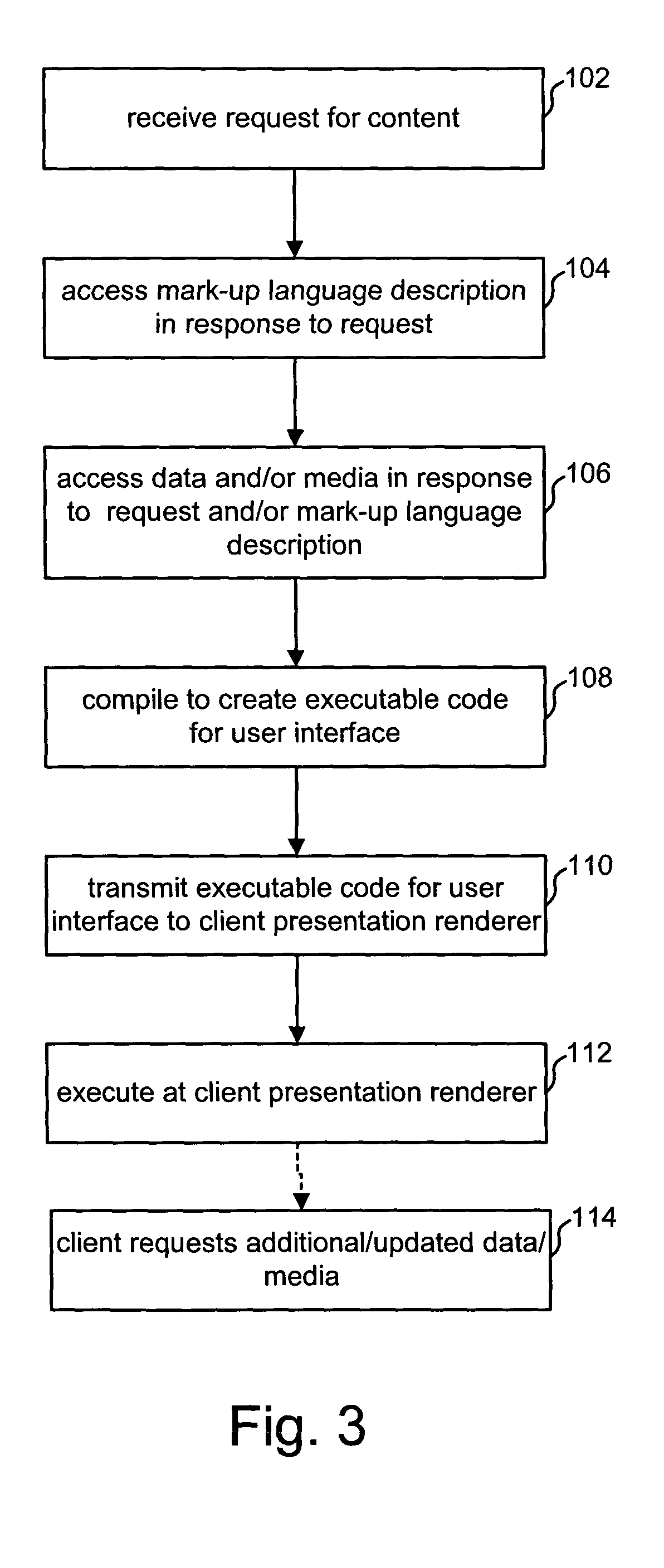Application data binding
a data binding and application technology, applied in the field of application data binding, can solve the problems of limited application, limited interaction, and insufficient presence of java on all types of clients
- Summary
- Abstract
- Description
- Claims
- Application Information
AI Technical Summary
Problems solved by technology
Method used
Image
Examples
first embodiment
the present invention is set forth below in an example of Laszlo code that uses these elements and demonstrates the binding views that are defined in the program source against data that is supplied during the execution of the program. The code will become clearer to the reader as the discussion continues. A first example of the present invention is provided by the following example:
<canvas> <view layout=“axis: y; spacing: 4”> <text>789< / text> <text>456< / text> <text>123< / text> <text>0.e< / text> < / view>< / canvas>
In the context of the presentation language, this code would display four rows of text displaying “789”, “456”, “123”, and “0.e”.
The following program displays the same results, but separates the data hierarchy (between the lines “<dataset>” and “< / dataset>”) from the view hierarchy (between the lines “<view>” and “< / view>”):
<canvas> <dataset name=“mydata”> <table>...
PUM
 Login to View More
Login to View More Abstract
Description
Claims
Application Information
 Login to View More
Login to View More - R&D
- Intellectual Property
- Life Sciences
- Materials
- Tech Scout
- Unparalleled Data Quality
- Higher Quality Content
- 60% Fewer Hallucinations
Browse by: Latest US Patents, China's latest patents, Technical Efficacy Thesaurus, Application Domain, Technology Topic, Popular Technical Reports.
© 2025 PatSnap. All rights reserved.Legal|Privacy policy|Modern Slavery Act Transparency Statement|Sitemap|About US| Contact US: help@patsnap.com



